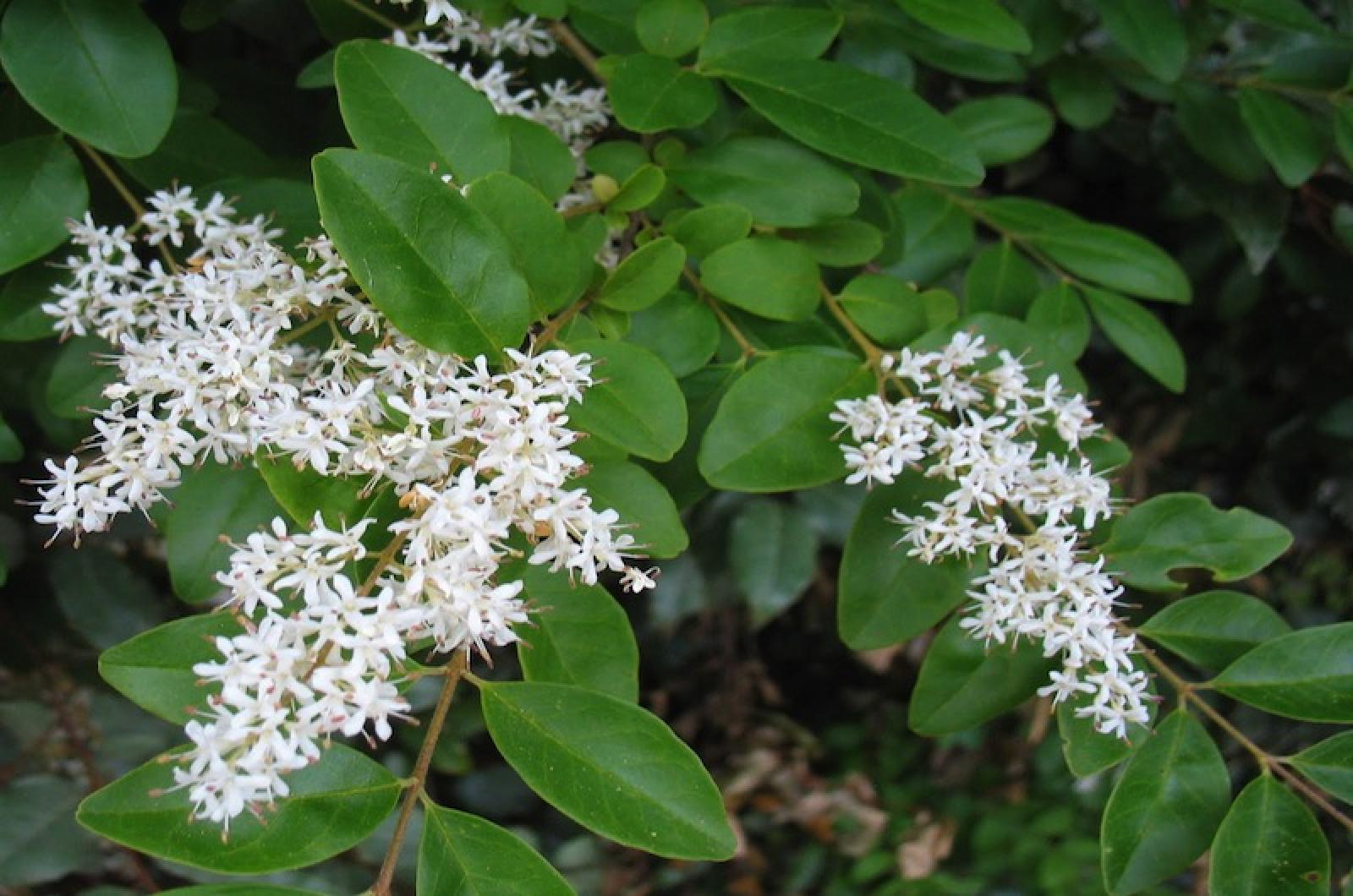“A hedge between keeps friendships green.”
This German proverb provides a solid reason for the ubiquity of the privet hedge. Privet is easily found on a walk around West Chop, or many other Island neighborhoods, and proves that Islanders believe in the peacekeeping power of the plant.
Privet has been around for a long time, but keeping neighbors nice is a relatively recent practice. These hedges now define space and create privacy with their rapid growth and dense, almost impenetrable appearance.
Other less practical uses were found in this plant’s past. Art and lust were more creative and intriguing reasons to cultivate privet.
Victorian gardeners inspired fancy and whimsy with privet plants pruned into topiaries of animals and mythical beasts. Color could also be created from the hedges. Yellow to deep green dye could be obtained from its leaves, and blue from its berries.
And much further back in time, privet was privy to a unique show of love. Five centuries before Christ, Anacreon, the Greek poet, “ornamentally wreathed his seven-stringed lyre with privet while he chanted his erotic verses.”
A more common custom was to employ privet for its medicinal properties. Although the berries are known to be toxic to people, pets and livestock, other parts of the plant are reputed to have healing characteristics.
Pliny, a Roman naturalist, suggested that “its leaves everywhere are used to treat ulcers, and with a sprinkling of salt, sores in the mouth.”
British botanist and herbalist John Gerard knew that “the leaves of privet do cure the swellings of the mouth or throat being gargarified with the juyce or decoction thereof.” Shakers sold leaves as anti-scurvy medicine and astringent mouthwash. (It’s not known whether they recommended gargarifying it.)
All of these oral fixations on privet are curious. Researchers have found that some species of privet contain sufficient natural antibiotics to interfere with staphylococcus aureus, or staph infection. Thus these traditional uses appear to have vindication in modern science.
However, not all is pleasant with privet. Hailing from Europe and Asia, this plant has become a bit of a nuisance in our country. Privet’s scientific genus is Ligustrum, and there are over 50 varieties of the plant in that group. First introduced in the U.S. in 1852, privet is now present in all 50 states.
Considered invasive in many states because of its ability to spread and outcompete other plants, privet has made as many enemies as it has friends. In Massachusetts, one variety, border privet, is banned from being sold in the state. Our neighbors in Connecticut went a few steps further and forbade the sale of three varieties of privet.
Beyond borders, privet does have some current devotees. They are wooed by the fragrance of its clusters of small white flowers which are blooming now. Unfortunately, often even the scent is stopped when an overeager gardener over-prunes and the flowers are literally nipped in the bud.
So while it may be true that good fences make good neighbors, privet hedges with their wily, invading nature, may not be the friendliest fences in the Island’s native neighborhoods
Suzan Bellincampi is director of the Felix Neck Wildlife Sanctuary in Edgartown.





Comments
Comment policy »